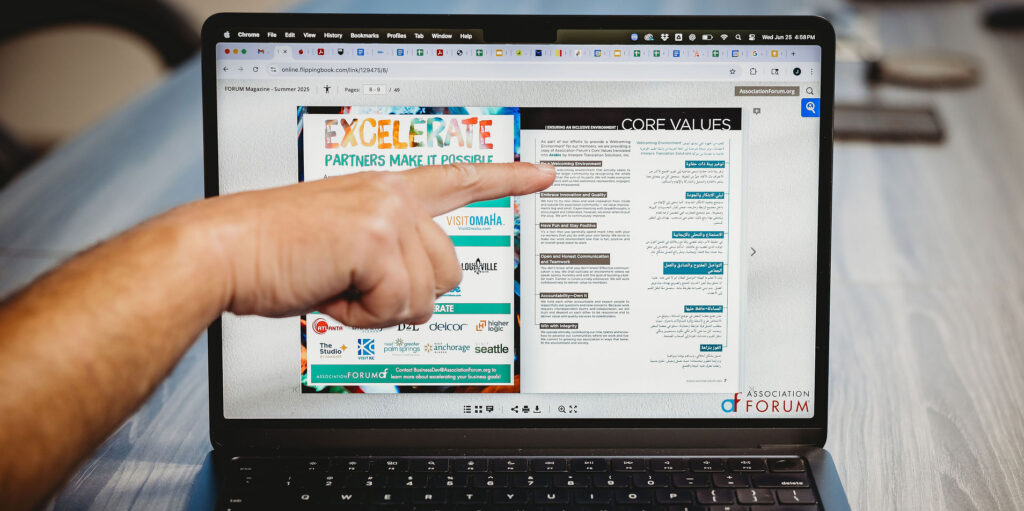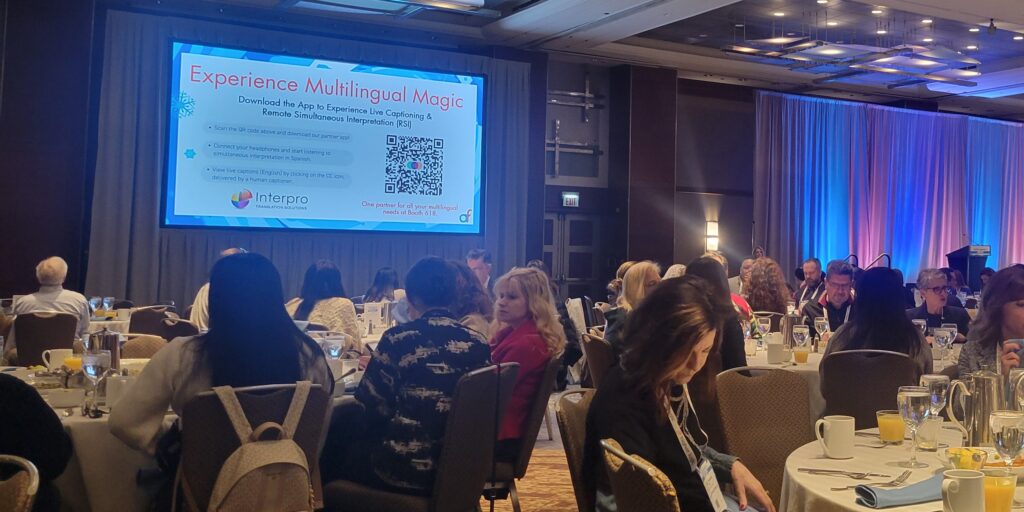
This guide outlines 12 proven strategies to save on translation services costs without compromising quality. Learn how smart planning, the right tools, and the right partner can make your multilingual efforts more efficient and affordable.
Making the Most of Your Translation Investment
As the founder and CEO of Interpro and someone who spent years working inside large enterprise translation companies before launching my own, I’ve seen just about every scenario when it comes to managing localization budgets.
For over 30 years, I’ve helped organizations of every size and industry make smart, sustainable investments in translation. And if there’s one thing I’ve learned, it’s this: saving on translation isn’t about cutting corners. It’s about making the right moves early and often to maximize every dollar.
When done right, your translation strategy drives long-term revenue and communication success. It creates consistency. It scales with your business. And it sets you up for better outcomes across markets and languages.
Here are 12 practical strategies I recommend to any organization looking to make their localization budget go further without sacrificing quality. Get help implementing any of these strategies, or get tailored guidance by contacting our team here.
Strategy 1: Provide Editable Source Files
What it means: Submit source files in formats like Word, PowerPoint, Excel, or InDesign, and never just PDFs or image-based files.
Why it saves: Editable files reduce or eliminate the need for file engineering or reconstruction. That means less time and fewer billable hours spent preparing your content for translation.
Example: We’ve had several clients who send PDFs for every training document, but saved thousands by switching to editable files because it cut engineering time by more than half.
How Interpro helps: We accept all major source file types, and will advise you on the most efficient way to prepare files for translation. Our engineering team is here to help you make that shift.
Strategy 2: Finalize Content Before Translation
What it means: Don’t translate drafts. Submit only final, approved versions of your content.
Why it saves: Unless you’re specifically working in an agile workflow, mid-project edits can trigger retranslation fees, version control issues, and delays across multiple languages.
Example: One organization revised their compliance handbook mid-project and paid double to update it across eight languages. Finalizing content up-front could have saved 40% of their translation cost.
How Interpro helps: We support you in setting up internal content workflows so translations only begin when files are ready. That keeps your budget and delivery timelines predictable.
Strategy 3: Bundle Content Strategically
What it means: Group similar documents, projects, or campaigns together for translation instead of submitting them piecemeal.
Why it saves: Bundling reduces administrative work and increases Translation Memory (TM) leveraging to help qualify the bundled projects for volume pricing. Translators can also work more efficiently the more context they have available.
Example: A marketing team that bundled three product brochures instead of submitting them separately saved ~25% by reducing repetitive work and formatting time.
How Interpro helps: We can help you coordinate large content drops while providing guidance on batching for TM optimization.
Strategy 4: Use a Partner That Builds and Maintains Your Translation Memory
What it means: A TM stores previously-translated segments to reuse in future projects.
Why it saves: You don’t pay full price again for content already translated. Plus, it ensures terminology and phrasing stay consistent, and increases translator productivity.
Example: SEIU 775 Benefits Group built a TM across 18 languages and saw long-term cost reductions thanks to reusable content segments.
How Interpro helps: We create, manage, and regularly update TMs for all clients. You own the data and can request your TM any time.
Strategy 5: Establish a Translation Glossary Early On
What it means: A glossary defines preferred translations for key terms, product names, and jargon.
Why it saves: It reduces questions from linguists, avoids inconsistencies, and cuts down on revision cycles.
Example: Armstrong International used a glossary to unify 8 localized websites. This upfront investment eliminated repeat edits and ensured brand alignment.
How Interpro helps: We help clients build custom glossaries from day one and integrate them into all active projects.
Strategy 6: Invest in Consistent Source Language
What it means: Write your original content clearly and uniformly.
Why it saves: Good source content leads to more accurate, faster translations and reduces the number of clarifications requested by linguists.
Example: A technical manufacturer improved source documentation clarity, which cut their average translation time by 30%.
How Interpro helps: Our linguists flag unclear phrasing and help you refine your source content when needed.
Strategy 7: Avoid Overlocalizing When Not Necessary
What it means: Focus your efforts on translating high-impact content. Not every visual, word, or sentence needs to be localized.
Why it saves: Prioritizing only what’s essential prevents unnecessary translation spend, especially for internal or low-visibility content.
Example: Global HR teams often opt to translate only key educational content that improves culture, while seeing diminishing returns on translating complete policy and educational libraries. Generally HR will focus on translating employee handbooks, key onboarding and safety courses, and required annual training.
How Interpro helps: We advise on what to translate fully, partially, or not at all based on your goals and audience.
New to localization? We cover localization for business basics in this article.
Strategy 8: Leverage Translation Memory Across Projects
What it means: Apply your existing TM to every new translation request.
Why it saves: Reused content in the translation memory gets translated faster and more affordably. The more you translate, the more you save over time.
Example: A medical client reused 30% of content in every quarterly training update. With TM in place, they reduced their per-project cost by nearly one-third.
How Interpro helps: We track TM usage metrics and advise clients on areas of high reuse to maximize ROI.
Strategy 9: Consider Machine Translation with Human Review for Low-Risk Content
What it means: AI-powered machine translation is proving to be effective in different industries, just be sure to follow it with human post-editing.
Why it saves: For non-critical documents, this hybrid method offers fast, affordable translation with acceptable accuracy.
Example: Recently, clients are using AI translation with human review called Machine Translation Post-Editing for translating internal training guides, lowering costs while preserving readability.
How Interpro helps: We offer secure, human-reviewed MT workflows with quality controls in place to avoid inaccuracies, errors, and brand damage.
Strategy 10: Prioritize Languages Based on Business Goals
What it means: Focus on translating for high-impact markets first, then scale.
Why it saves: Every additional language increases costs. Starting small allows you to test performance and return before broadening scope.
Example: A manufacturing organization translated into Spanish and German based on market data, then expanded to four more languages after proving ROI in new markets.
How Interpro helps: Our consulting services help you identify the most valuable languages for your audience and business model, and then create an efficient translation process.
Strategy 11: Reuse Previously-Translated Assets
What it means: Repurpose translations from one medium (e.g., a brochure) to another (e.g., web copy).
Why it saves: You avoid duplicating work for similar content and ensure consistency across touchpoints.
Example: A client repurposed product descriptions from translated spec sheets for their ecommerce site, eliminating the need for separate translations.
How Interpro helps: We archive and manage all translated content so you can easily reuse it across channels.
Strategy 12: Choose a Partner That Offers Strategic Guidance
What it means: Work with a provider that advises you, and can guide the translation process for you.
Why it saves: Strategic guidance prevents costly missteps and helps you plan smarter from the beginning.
Example: Association Forum partnered with Interpro to localize their events and publications. Our consultative approach helped them avoid rushed rework and streamline multilingual content across all platforms.
How Interpro helps: We don’t just execute. We collaborate with you to build efficient, scalable, and budget-conscious translation programs.
Key Takeaways: Translation Savings Without CompromisingQuality
Looking to make your translation strategy more efficient and your translation budget work smarter? Schedule a consultation with Interpro today and let’s talk.
Every dollar you spend on translation should go toward accuracy, clarity, and long-term value. These 12 cost-saving strategies help you reduce spend, improve consistency, and scale communication confidently.
These recommendations come from years of seeing what works and what doesn’t. Translation can be complex, but it doesn’t have to be overwhelming or unnecessarily expensive. When you plan ahead, partner well, and use the right tools, you can control costs while increasing impact.
At Interpro, we help our clients build smart, scalable strategies that support long-term growth. If you’re looking for a partner who’s been in your shoes and knows how to make every cent matter, we’re here to help.
Category: Translation
Service: Translation Services
Don't forget to share this post!
Stay Updated with Interpro
Subscribe to our newsletter for the latest updates and insights in translation and localization.






